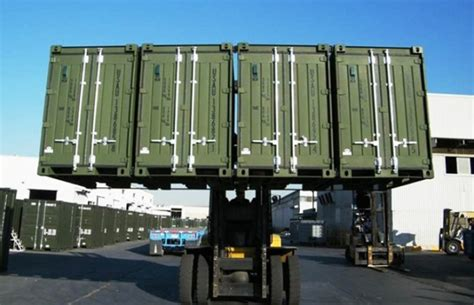I haven't talked truck logistics in a while. This thread 🧵will revisit truck logistics of the Russo-Ukrainian War.
1. What we thought we knew.
2. The logistical truth on the ground.
3. And how Ukraine's new HIMARS/GMLRS weapons are kicking over the logistical table.
1/
1. What we thought we knew.
2. The logistical truth on the ground.
3. And how Ukraine's new HIMARS/GMLRS weapons are kicking over the logistical table.
1/
What we thought we knew came from the outstanding November 2021 piece by Alex Vershinn titled:
"FEEDING THE BEAR: A CLOSER LOOK AT RUSSIAN ARMY LOGISTICS AND THE FAIT ACCOMPLI"
2/
warontherocks.com/2021/11/feedin…
"FEEDING THE BEAR: A CLOSER LOOK AT RUSSIAN ARMY LOGISTICS AND THE FAIT ACCOMPLI"
2/
warontherocks.com/2021/11/feedin…
The passage I've clipped here was the heart of the November 2021 advanced Western understanding of Russian logistics.
The problem with the passage below is everything Alex Vershinn stated as a 'beer math' model of Russian truck logistics is horribly wrong.
3/
The problem with the passage below is everything Alex Vershinn stated as a 'beer math' model of Russian truck logistics is horribly wrong.
3/

Alex Vershinn, like every other Western logistician, was blindsided by the 80 year/four generation Western intelligence failure to notice the Russian Army doesn't use mechanized logistics 'enhancers' to move its ammo & supplies.
4/


4/



The Russian Army has no pallets, no forklifts nor any ISO containers.
This is what Russian Army artillery ammunition supply points look like.👇
5/
This is what Russian Army artillery ammunition supply points look like.👇
5/
https://twitter.com/Osinttechnical/status/1508973215321841664
I've done several threads on this issue.
This thread is from 24 March 2022.
6/
This thread is from 24 March 2022.
6/
https://twitter.com/TrentTelenko/status/1507056039086153734
And this one is from March 27th 2022 discussing the logistical advantages of Western & Chinese pallet capable supply trucks versus the Russian's complete lack.
7/
7/
https://twitter.com/TrentTelenko/status/1508106165212917767
Alex Vershinn's assumption that six hours of work day will fill & empty three truckloads of supplies in a 24 hour work day needs to be divided by 3 or 4 due to the lack of pallets & all terrain forklifts
Moving ammo packaged thus by hand takes longer👇
8/
Moving ammo packaged thus by hand takes longer👇
8/
https://twitter.com/u24_news/status/1517368674352476160
I've talked to Ukrainian soldiers in the @walter_report Twitter space & it is taking a whole day to do one round trip resupply run to a range of 90 km, not 90 miles.
While Alex Vershinn mentioned in passing that damage to infrastructure invalidated his 'beer math,' expanding
9/
While Alex Vershinn mentioned in passing that damage to infrastructure invalidated his 'beer math,' expanding
9/
...a bit on what 'infrastructure damage' means is required.
When people on Twitter think of destroying bridges in Ukraine, they think like this👇
10/
When people on Twitter think of destroying bridges in Ukraine, they think like this👇
10/
https://twitter.com/aKookyFish/status/1500068050288398338
This Maxar video of the infamous "64 km convoy" north of Kyiv in mud season shows lots of little places where creeks or water drainage culverts go under the roads.
Any one of those blown up, see photo, require longer truck by-pass logistical routes.
11/

Any one of those blown up, see photo, require longer truck by-pass logistical routes.
11/
https://twitter.com/kamerknc/status/1499622026755117056

Infrastructure destroyed by Russian artillery plus the utter lack of mechanized logistics yields much different truck logistics 'beer math.'
1. 90 km on Ukrainian artillery ravaged roads is minimally a 2 hour drive one way or 4 hours on the road round trip.
12/
1. 90 km on Ukrainian artillery ravaged roads is minimally a 2 hour drive one way or 4 hours on the road round trip.
12/
2. Since Russian trucks need to be loaded by hand, you are looking at least 3 hours to load & a further 3 hours to unload.
3. Add in needed break times for the drivers, etc. & 1 Russian tactical truck can do 1 supply run a day to between 60% & 75% the radius of action
14/
3. Add in needed break times for the drivers, etc. & 1 Russian tactical truck can do 1 supply run a day to between 60% & 75% the radius of action
14/
3. con't ...that 'FEEDING THE BEAR' beer math laid out, call it 30% of Vershinn's logistic capability model.
This has huge implications given the Ukrainian artillery depot interdiction campaign.
See @TheBaseLeg Russian Artillery Depot Strike thread👇
15/
This has huge implications given the Ukrainian artillery depot interdiction campaign.
See @TheBaseLeg Russian Artillery Depot Strike thread👇
15/
https://twitter.com/TheBaseLeg/status/1541302610711691265
And see the @COUPSURE Russian Artillery Depot Strike thread here:👇
16/
16/
https://twitter.com/COUPSURE/status/1543944760167202820
According to the US Army Chief of Staff, the latest versions of US GMLRS that Ukrainian HIMARS fire reach out to at least 85 km to hit within the various OSINT circular error probabilities of 3-to-7 meters.
17/
https://twitter.com/UW_Observer/status/1543961351059652609
17/
Effectively, GMLRS will push Russian tactical trucks outside their sustained one-day, round trip, supply range.
This means Russia is going to have to rely far more on railways than it has to date.
And the Russians have been relying more and more on railways.
18/
This means Russia is going to have to rely far more on railways than it has to date.
And the Russians have been relying more and more on railways.
18/
The easiest way to get around reduced truck supply lift is to 'bomb up' your tanks, AFV's and artillery at railway siding.
See the T-72 getting resupplied next to a train
19/
See the T-72 getting resupplied next to a train
https://twitter.com/Blue_Sauron/status/1542850143111843840
19/
Or simply base, resupply & fire your longest ranged & most logistically intensive rocket artillery from railway siding.
See👇
20/
See👇
https://twitter.com/RALee85/status/1544405990346555396
20/
Once Ukraine works through the most critical artillery depots on it's list (map).
It will use all its newly acquired deep strike assets to slam Russian ammo supply trains like in those retweets.
21/
It will use all its newly acquired deep strike assets to slam Russian ammo supply trains like in those retweets.
21/

Russian ammo trains in range of GMLRS are a whole lot easier to find & strike than tactical trucks.
Plus, when detonated, extensive train clearance & EOD removal will have to happen before the rail lines line can be used again.
GMLRS means Russian logistics is hosed.
22/End
Plus, when detonated, extensive train clearance & EOD removal will have to happen before the rail lines line can be used again.
GMLRS means Russian logistics is hosed.
22/End

• • •
Missing some Tweet in this thread? You can try to
force a refresh








